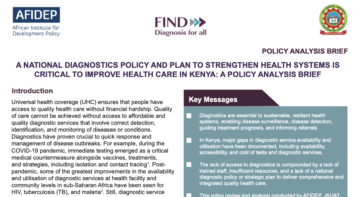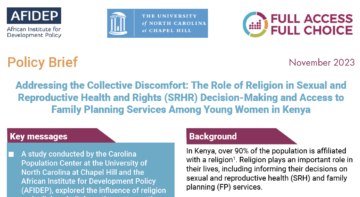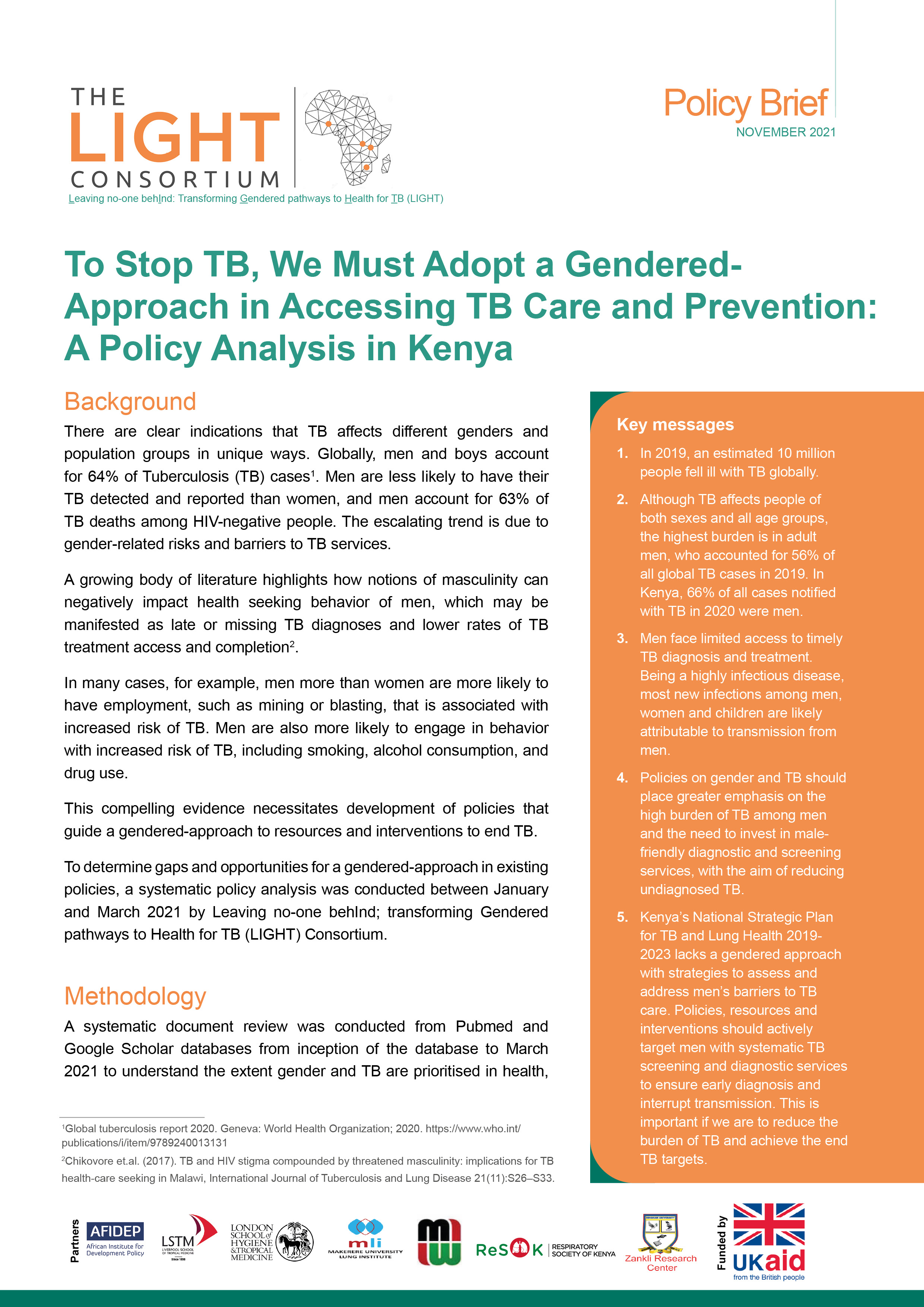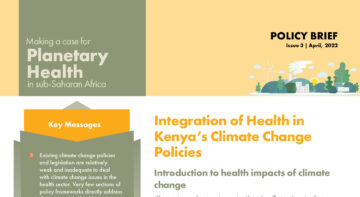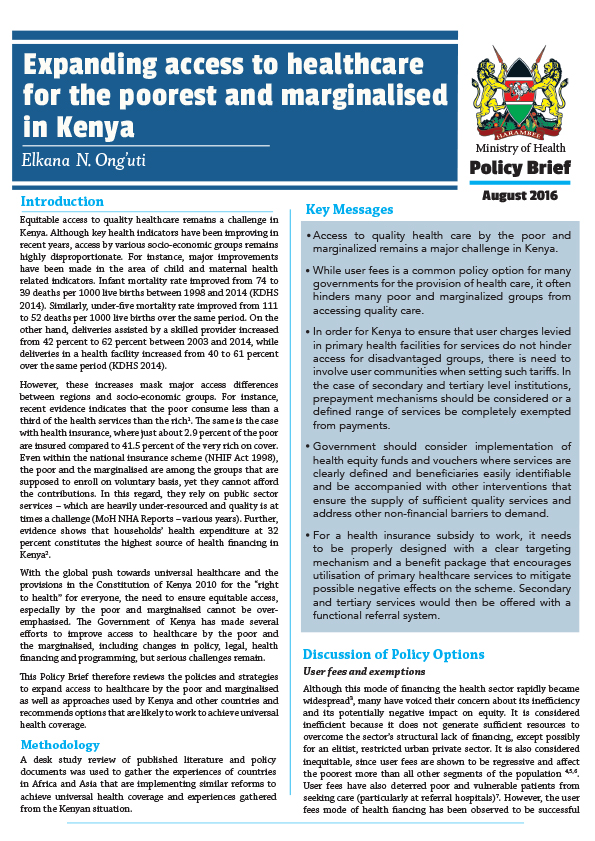
Equitable access to quality healthcare remains a challenge in Kenya. Although key health indicators have been improving in recent years, access by various socio-economic groups remains highly disproportionate. For instance, major improvements have been made in the area of child and maternal health related indicators. Infant mortality rate improved from 74 to 39 deaths per 1000 live births between 1998 and 2014 (KDHS 2014). Similarly, under-five mortality rate improved from 111 to 52 deaths per 1000 live births over the same period. On the other hand, deliveries assisted by a skilled provider increased from 42 percent to 62 percent between 2003 and 2014, while deliveries in a health facility increased from 40 to 61 percent over the same period (KDHS 2014).
With the global push towards universal healthcare and the provisions in the Constitution of Kenya 2010 for the “right to health” for everyone, the need to ensure equitable access, especially by the poor and marginalised cannot be over-emphasised. The Government of Kenya has made several efforts to improve access to healthcare by the poor and the marginalised, including changes in policy, legal, health financing and programming, but serious challenges remain.
This Policy Brief therefore reviews the policies and strategies to expand access to healthcare by the poor and marginalised as well as approaches used by Kenya and other countries and recommends options that are likely to work to achieve universal health coverage.
Expanding access to healthcare for the poorest and marginalised in Kenya
Related Publications
